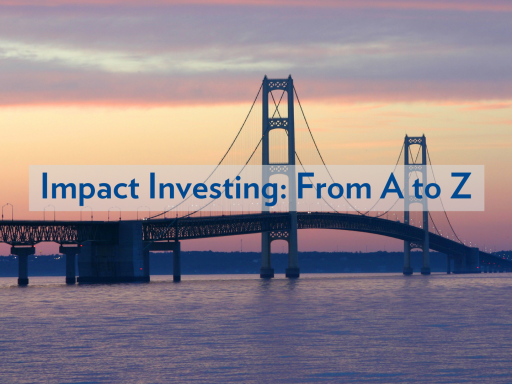The Why of Impact Investing
Impact investing harnesses a portion of the trillions in investment assets in the U.S. for investment in services that intentionally aim to cure social issues.
Impact investing harnesses a portion of the trillions in investment assets in the U.S. for investment in services that intentionally aim to cure social issues.

By Jennifer Oertel, CMF Impact Investing Expert in Residence
Do you know a charitable organization that dissolved? How about one that dissolved because it fulfilled its mission and is no longer needed? I always ask this question when I speak on impact investing – and only once has someone raised their hand. Examples seem to be few and far between, perhaps because in large part, charities have challenged themselves to take on complex, systemic issues that require significant resources over an extended period of time.
According to the latest Giving USA report, in 2018 Americans gave $427.71 billion in contributions to charity, a slight increase over the previous year (before adjustment for inflation). This may seem remarkable amid concerns that changes to the tax code applicable to 2018 effectively did away with the charitable contribution deduction for most individual donors. However, deeper analysis, such as the Charitable Giving and Tax Incentives report from Independent Sector, shows that while there was an increase in charitable giving dollars, the number of donors has been on the decline. And, many in the field are concerned that contribution totals will decline significantly as the effects of tax reform catch up with the public.
Even if charitable contributions don’t decline, there is clearly more need in the United States than there are charitable dollars available. Impact investing aims to harness a portion of the trillions in investment assets in the U.S. for investment in products and services that intentionally aim to cure social issues.
Further, with impact investments, funders expect to not only receive a return of the funds invested or loaned, but typically a return on such funds as well, thereby effectively recycling the capital to create more positive social impact. In contrast, when a grant is made, the financial return is negative 100 percent, aside from potential tax savings. The same amount of grant dollars must be raised the next year (plus cost increases) simply to maintain the same level of services/programming.
These points all speak to the why of impact investing – the opportunity to generate a positive social impact while at the same time receiving a return on those funds, with the expectation that not only will the funds available be needed for extended time but with potential fewer funds available in the future.
As reported by the JP Morgan/ Global Impact Investing Network (GIIN) 2019 Annual Investor Survey of 266 impact investors, which we reported on in our July 1 edition of the Weekly Download, the most common motivations reported by respondents for making impact investments are the commitment to be more responsible with investment dollars, dedication to social mission and pursuit of more efficient ways to meet social impact goals. More than half of the respondents also consider contribution to a global agenda such as the United Nations Sustainable Development Goals or the Paris Climate Accord a very important motivator for making impact investments.
For additional insight into the reasons to engage in impact investing:
Forbes’ “10 Reasons Why you Should Engage in Impact Investing”
The Global Impact Investing Network (GIIN) – “Why Impact Investing?”
InvestmentNews “Why Investors may be Overlooking the Benefits of Impact Investing”
My next blog will feature barriers to impact investing and solutions thereto.